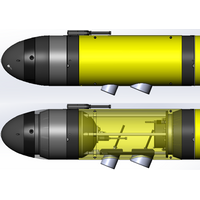
Teledyne Integrating the Kongsberg EK80 WBT Mini Into Its Slocum Gliders
EK80 WBT Mini Scientific echo sounder onto the Teledyne Slocum G3s Glider.The energy-efficient Kongsberg EK80 WBT Mini is a compact version of the Wide Band Transceiver (WBT), used by marine research vessels worldwide to identify and quantify a wide range of targets such as fish, plankton, bubbles, oil droplets, and physical oceanographic features such as turbulence.The Slocum Glider is the world’s most prolific autonomous gliding platform, a subsea vehicle that uses changes in buoyancy to efficiently move through the water, allowing it to persistently monitor the ocean water column for months
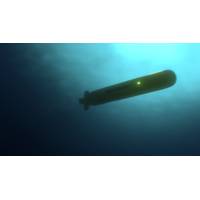
How AUVS Can Spot Oil Plumes After an Ocean Spill
of Mexico and terrified the world. This horrific accident — recorded as the largest oil spill in history — killed 11 workers and released 210 million gallons of crude oil into the ocean.While about a half of the oil rose to the surface, the other half formed a suspended plume of many tiny oil droplets about 1,000 meters below the surface. Its extent and whereabouts couldn’t be determined from above.Autonomous underwater vehicles (AUVs) are untethered marine robots that can explore the underwater world. AUVs were first used in oil probing missions when the Woods Hole Oceanographic Institution
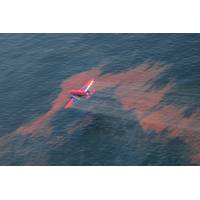
Did Dispersants Help Responders Breathe Easier at Deepwater Horizon?
that the model adequately simulates what actually occurred. In the model, we carefully weave together several different dynamic physical and chemical effects that are “coupled” together. These included the changing chemical compositions, fluid dynamics and interlinked movements of oil droplets, gas bubbles and seawater in the deep sea. To understand what happened, these interdependent problems all have to be solved at the same time. The resulting model is very complex. The equations can be solved with a desktop computer—but only after three weeks of nonstop number-crunching
Oil-hungry Bacteria Could Clean Up Next Big Oil Spill
to degrade the oil. “Different bacteria have different appetites for different hydrocarbons, but they can work beautifully in concert together to clean up polluted water.” The findings from this UK and US collaboration also reveal an ability of these bacteria to move towards oil droplets and to use scarce nutrients, suggesting that these microbes are like sentinels in the ocean that are well-adapted to respond quickly to the influx of oil in the event of a spill. The team also identified the bacteria that work best at different depths. Oceanospirillales, for example, degraded
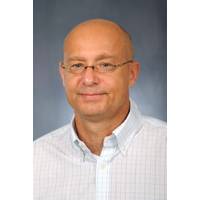
Tiny Ripples Important to Ocean Mixing
was recently awarded a $409,000 grant from the National Science Foundation (NSF) to study the impact of non-breaking surface waves and the turbulence they create in our oceans. The same processes that regulate the global climate also govern the dispersion of phytoplankton and contaminants such as oil droplets from an oil spill. This is exactly why Bogucki and the NSF believe that the study of ocean mixing is necessary. “It is important to look at how the upper two meters of the ocean responds to small ocean disturbances,” Bogucki said. “By including a more realistic and turbulent

MacArtney Sells First LISST to DNV
32 specific log-spaced angle and ranges. This primary measurement is post-processed to obtain sediment size distribution, volume concentration, optical transmission and VSF. The LISST-Deep is best known for its role after the Deepwater Horizon accident in April 2010, where it was deployed to detect oil droplets and their size in the deep waters of the Gulf of Mexico. macartney.com
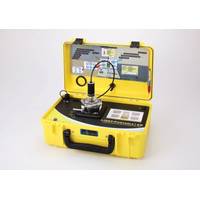
MacArtney to Distribute LISST Instruments
boast an extensive track record of use for environmental monitoring, industrial and scientific applications across the globe. The unique submersible LISST laser particle sizers help engineers, scientists and monitoring agencies to reliably measure the concentration and size of sediment, plankton and oil droplets in any water body. Likewise, for a wide range of industrial applications, from hydropower turbine monitoring to optimization of drilling operations, portable and industrial LISST models will get the job done. With group headquarters in Esbjerg, Denmark, and Norwegian operations located in Stavanger

Fluid Imaging Technologies Appoints Director of Oil Markets
will be responsible for spearheading sales growth for the company’s FlowCAM® fluid particle imaging instrumentation in the oil and gas industry worldwide. The FlowCAM product line automatically detects, images, measures, differentiates and identifies individual particles in a fluid such as oil droplets and solids in produced water or frack water, drill bit cuttings, weighting material, and lost circulation material suspended in drilling mud. “Steve brings a unique understanding of the role technology can play in improving every facet of oil field operations,” says Kent Peterson


 February 2024
February 2024





